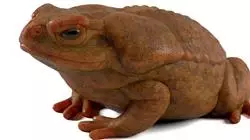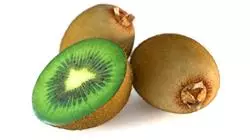University certificate
The world's largest faculty of design”
Introduction to the Program
Realize a great amount of detail without losing the performance of the image, thanks to the contents of this university program"

It's no secret that Texturing has changed the way an image is appreciated. Thanks to this, it is possible to have hyper-realistic effects in film animations, video games, advertising Spost and more. That is why, in this Postgraduate diploma, the student will be able to acquire the knowledge needed to develop professionally as an expert designer in Texturing. To do so, they will have to make use of the most important programs in the sector, such as 3DS Max, Photoshop and ZBrush.
So, first of all, you will learn the concepts prior to the creation of a model, such as baking, which is the projection of a high-resolution model on a low-resolution one, in order to appreciate the greatest amount of detail without losing the performance of the image. With this in mind, we will be able to move on to the Texturing module with Substance Painter, a software that offers a wide range of options when working with hyper-realistic textures. In this sense, students will learn how to configure the different values and their effects on each layer of a material, and how to work with masks to recreate dirt or wear effects.
Finally, once the model is finished it is time to move on to rendering, thanks to which the work can be shown with different sets of lights and the highest possible image quality. In this module we will go deeper into this process using Mormoset, a pioneer program in the world of digital sculpture.
For all these reasons, this Postgraduate diploma is the most complete in the academic market, being taught online and making it easier for students to study. Similarly, they will have an excellent teaching staff, who will provide various teaching materials to consolidate the theoretical content.
Know in depth the materials and rendering tool of the Marmoset Toolbag program, widely used by 3D modelers and sculptors”
This Postgraduate diploma in Texturing contains the most complete and up-to-date program on the market. The most important features include:
- The development of case studies presented by experts in 3D Modeling with 3D Studio Max
- The graphic, schematic, and practical contents with which they are created, provide practical information on the disciplines that are essential for professional practice
- Practical exercises where the self-assessment process can be carried out to improve learning
- Its special emphasis on innovative methodologies
- Theoretical lessons, questions to the expert, debate forums on controversial topics, and individual reflection assignments
- Content that is accessible from any fixed or portable device with an Internet connection
At the end of the program you will be able to create the most hyper-realistic textures that the public can see, thanks to your skills in ZBrush"
The program includes, in its teaching staff, professionals from the sector who bring to this program the experience of their work, in addition to recognized specialists from prestigious reference societies and universities.
Its multimedia content, developed with the latest educational technology, will allow professionals to learn in a contextual and situated learning environment, i.e., a simulated environment that will provide immersive education programmed to prepare in real situations.
The design of this program focuses on Problem-Based Learning, by means of which professionals must try to solve the different professional practice situations that are presented to them throughout the course. For this purpose, the student will be assisted by an innovative interactive video system created by renowned and experienced experts.
Thanks to the 100% online content of this program, you will be able to continue with your professional activities and study at your own pace"

Enroll today in this Postgraduate diploma and develop your ability to create any type of 3D textures"
Why study at TECH?
TECH is the world’s largest online university. With an impressive catalog of more than 14,000 university programs available in 11 languages, it is positioned as a leader in employability, with a 99% job placement rate. In addition, it relies on an enormous faculty of more than 6,000 professors of the highest international renown.

Study at the world's largest online university and guarantee your professional success. The future starts at TECH”
The world’s best online university according to FORBES
The prestigious Forbes magazine, specialized in business and finance, has highlighted TECH as “the world's best online university” This is what they have recently stated in an article in their digital edition in which they echo the success story of this institution, “thanks to the academic offer it provides, the selection of its teaching staff, and an innovative learning method aimed at educating the professionals of the future”
A revolutionary study method, a cutting-edge faculty and a practical focus: the key to TECH's success.
The most complete study plans on the university scene
TECH offers the most complete study plans on the university scene, with syllabuses that cover fundamental concepts and, at the same time, the main scientific advances in their specific scientific areas. In addition, these programs are continuously being updated to guarantee students the academic vanguard and the most in-demand professional skills. In this way, the university's qualifications provide its graduates with a significant advantage to propel their careers to success.
TECH offers the most comprehensive and intensive study plans on the current university scene.
A world-class teaching staff
TECH's teaching staff is made up of more than 6,000 professors with the highest international recognition. Professors, researchers and top executives of multinational companies, including Isaiah Covington, performance coach of the Boston Celtics; Magda Romanska, principal investigator at Harvard MetaLAB; Ignacio Wistumba, chairman of the department of translational molecular pathology at MD Anderson Cancer Center; and D.W. Pine, creative director of TIME magazine, among others.
Internationally renowned experts, specialized in different branches of Health, Technology, Communication and Business, form part of the TECH faculty.
A unique learning method
TECH is the first university to use Relearning in all its programs. It is the best online learning methodology, accredited with international teaching quality certifications, provided by prestigious educational agencies. In addition, this disruptive educational model is complemented with the “Case Method”, thereby setting up a unique online teaching strategy. Innovative teaching resources are also implemented, including detailed videos, infographics and interactive summaries.
TECH combines Relearning and the Case Method in all its university programs to guarantee excellent theoretical and practical learning, studying whenever and wherever you want.
The world's largest online university
TECH is the world’s largest online university. We are the largest educational institution, with the best and widest online educational catalog, one hundred percent online and covering the vast majority of areas of knowledge. We offer a large selection of our own degrees and accredited online undergraduate and postgraduate degrees. In total, more than 14,000 university degrees, in eleven different languages, make us the largest educational largest in the world.
TECH has the world's most extensive catalog of academic and official programs, available in more than 11 languages.
Google Premier Partner
The American technology giant has awarded TECH the Google Google Premier Partner badge. This award, which is only available to 3% of the world's companies, highlights the efficient, flexible and tailored experience that this university provides to students. The recognition as a Google Premier Partner not only accredits the maximum rigor, performance and investment in TECH's digital infrastructures, but also places this university as one of the world's leading technology companies.
Google has positioned TECH in the top 3% of the world's most important technology companies by awarding it its Google Premier Partner badge.
The official online university of the NBA
TECH is the official online university of the NBA. Thanks to our agreement with the biggest league in basketball, we offer our students exclusive university programs, as well as a wide variety of educational resources focused on the business of the league and other areas of the sports industry. Each program is made up of a uniquely designed syllabus and features exceptional guest hosts: professionals with a distinguished sports background who will offer their expertise on the most relevant topics.
TECH has been selected by the NBA, the world's top basketball league, as its official online university.
The top-rated university by its students
Students have positioned TECH as the world's top-rated university on the main review websites, with a highest rating of 4.9 out of 5, obtained from more than 1,000 reviews. These results consolidate TECH as the benchmark university institution at an international level, reflecting the excellence and positive impact of its educational model.” reflecting the excellence and positive impact of its educational model.”
TECH is the world’s top-rated university by its students.
Leaders in employability
TECH has managed to become the leading university in employability. 99% of its students obtain jobs in the academic field they have studied, within one year of completing any of the university's programs. A similar number achieve immediate career enhancement. All this thanks to a study methodology that bases its effectiveness on the acquisition of practical skills, which are absolutely necessary for professional development.
99% of TECH graduates find a job within a year of completing their studies.
Postgraduate Diploma in Texturing
It is widely known that texturing has transformed the way an image is appreciated. Thanks to it, hyper-realistic effects can be created in film animations, video games, advertising spots and other media. In this sense, companies in these industries need the best designers specialized in the application of top-notch textures in their artistic creations. For this reason, TECH has created the Postgraduate Diploma in Texturing, an excellent degree that will allow you to acquire the knowledge required to be an expert in texturing and develop professionally in this field. Thanks to this program, you will be able to use the most important programs in the sector, such as 3DS Max, Photoshop and ZBrush, in order to learn how to create high quality textures and know how to apply them to your designs.
Learn in a 100% online way and without being tied to pre-established schedules
During the duration of this degree, you will master the best baking techniques, you will handle the leading methods for texturing in Substance Painter or you will manage the rendering strategies that allow you to generate first class finishes. This Postgraduate Diploma in Texturing is the most complete program in the academic market, which is taught completely online, making it easy for students to study. In addition, you will have an excellent teaching staff, which will provide you with various teaching materials to consolidate the theoretical contents. In such a way, you will have access to a wide variety of resources and you will be able to learn at your own pace, which will enable you to consolidate your knowledge and apply it in your professional career in the world of modeling and texturing.
"







